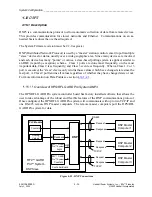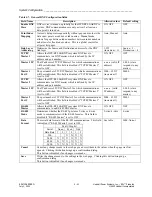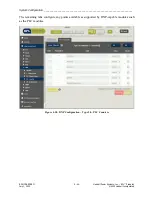
System Configuration __________________________________________________________________
RF-MCGARDPRO
Hubbell Power Systems, Inc.
–
RFL™
Products
July 1, 2022
©2022 Hubbell Incorporated
4-56
4.16
DNP3
4.16.1 Description
DNP3 is a communications protocol to allow automatic collection of data from remote devices.
This provides communication for slower networks and Ethernet. Communications on an as-
needed basis reduces the overhead required.
The System Firmware version must be
2.2.0 or greater.
DNP (Distributed Network Protocol) is used by a “master” station (control center) to poll multiple
“slave” devices for status, usually over a wide geographic area. Since many devices are involved
and each device has many “points” or values, a class-based polling system is applied, similar to
an RBE (report-by-exception) scheme. Class 1 polls are done most frequently, on the most
important data, Class 2 less frequently, and Class 3 even less frequently. When a Class 1, 2 or 3
poll is executed, the “slave” device only returns those values which have changed state since the
last poll. A Class 0 poll returns all values regardless of whether they have changed state or not.
For more information on Data Points see section
Overview of HPS/RFL GARD Pro System DNP3
The HPS/RFL GARD Pro system controller board has factory installed software that allows the
user to take advantage of the robust and flexible features of the DNP communications protocol.
Once configured, the HPS/RFL GARD Pro system will communicate with up to two TCP/IP and
one RS-485 remote DNP master computers. The remote master computers poll the HPS/RFL
GARD Pro system for data.
DNP Master
Computer 1
RFL™ GARD
Pro™ System
DNP Slave
Controller Board
DNP
Request
RS- 485
Response
PLC Module
Counters
Analog
Values
Deadband
RFL™ GARD
Pro™ System
Logic
RFL™ GARD
Pro™ System
Counters
HMI
DNP Master
Computer 2
Request
TCP/IP
Response
DNP Master
Computer 3
Request
Response
TCP/IP
Figure 4-53. DNP Connections
















































